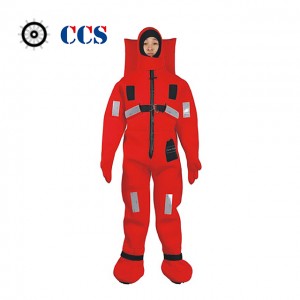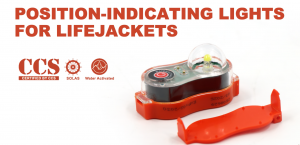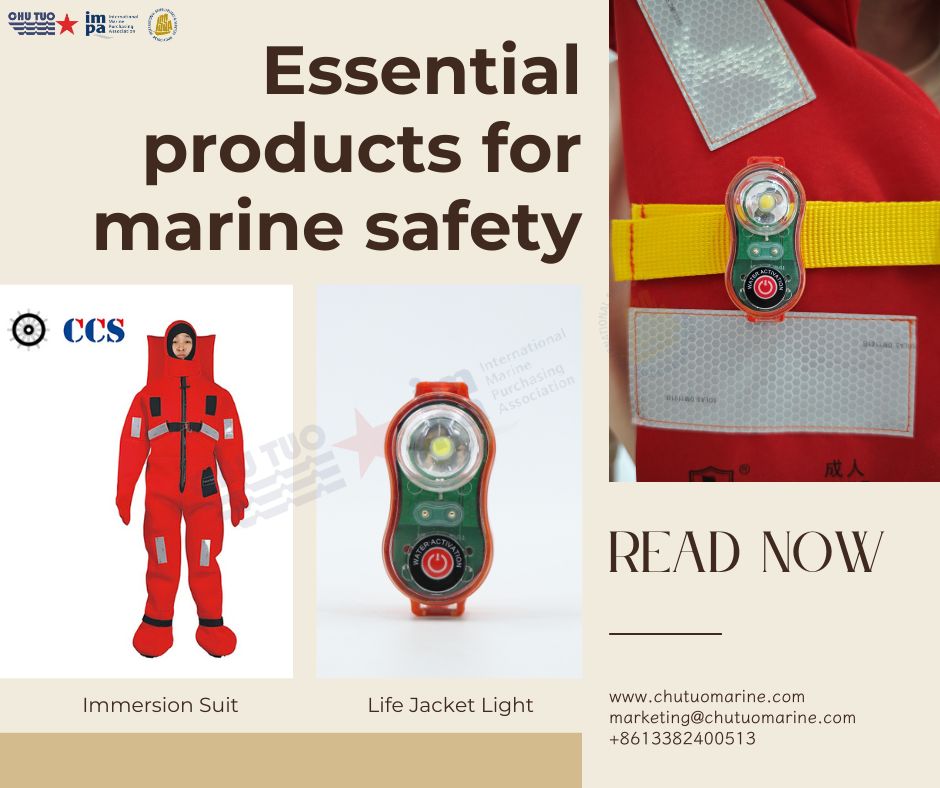In the maritime sector, ensuring safety is of utmost importance. In situations involving cold water emergencies, being adequately equipped can be the deciding factor between survival and tragedy. Among the crucial safety gear are immersion suits and life jacket lights, which together offer essential protection and visibility, enabling individuals to endure and be rescued during maritime incidents.
Overview of Immersion Suits
Immersion suits are specially designed clothing intended to shield individuals from the severe conditions associated with cold water. The RSF-II immersion suit, for instance, is a premium survival suit that complies with SOLAS (Safety of Life at Sea) standards. Made from advanced rubberized materials, this suit provides both thermal insulation and buoyancy, which are critical for anyone who may become submerged in cold waters.
Notable Features of the RSF-II Immersion Suit
Thermal Insulation: A primary role of an immersion suit is to preserve body heat. The RSF-II suit is engineered to ensure that the wearer’s body temperature does not decrease by more than 2°C after being immersed in water as cold as 0°C for up to six hours. This is vital, as hypothermia can develop swiftly in icy conditions.
Buoyancy: The suit is designed to offer over 150N of buoyancy, enabling the wearer to remain afloat without the need for additional flotation aids. This inherent buoyancy is crucial for maintaining position in the water until help arrives.
User-Friendly Design: The RSF-II immersion suit is crafted for rapid donning, allowing users to put it on within seconds. This feature is particularly significant in emergencies, where every moment is critical.
Robust Construction: Constructed from CR expanded neoprene composite fabric, the suit is not only insulated but also durable, making it suitable for challenging marine environments.
Adherence to Safety Regulations: The RSF-II immersion suit meets international safety standards, ensuring that it has undergone rigorous testing and certification for marine safety.
The Importance of Position-Indicating Lights
In addition to donning an immersion suit, the presence of a position-indicating light is essential for improving visibility during emergencies in cold water. These lights are engineered to activate automatically upon contact with water, guaranteeing that even if an individual becomes incapacitated, the light will continue to operate.
Key Characteristics of Position-Indicating Lights
Automatic Activation: The high-intensity LED light turns on when it encounters either salt or fresh water, providing more than 8 hours of illumination. This functionality is vital for enabling rescuers to locate individuals swiftly.
Manual Deactivation: Users can conveniently turn off the light with a simple button press, allowing for control when illumination is unnecessary.
Rapid Installation: Position-indicating lights can be fitted to nearly any life jacket in a matter of seconds. This versatility ensures that all safety equipment can be equipped promptly.
Enhanced Visibility: The bright strobe mode of the light significantly boosts the likelihood of being seen by rescue teams, particularly in conditions of low visibility.
Regulatory Compliance: These lights adhere to international testing standards, ensuring their reliability during emergencies.
The Synergy of Immersion Suits and Life Jacket Lights
In the case of a cold water emergency, wearing an immersion suit that includes a position-indicating light establishes a comprehensive safety system. The suit offers thermal protection and buoyancy, while the light guarantees visibility for rescuers. This combination is vital for survival, especially in remote locations where rescue times may be prolonged.
Survival Duration: The immersion suit plays a crucial role in preserving body heat, while the position-indicating light significantly improves visibility, enabling search and rescue teams to locate individuals more efficiently. This combination enhances the chances of survival.
Psychological Comfort: Being equipped with both an immersion suit and a position-indicating light can instill a sense of reassurance, allowing individuals to maintain composure and focus during emergencies.
Essential for Marine Operations: For ship chandlers and marine supply companies, it is imperative to ensure that vessels are outfitted with both immersion suits and life jacket lights. This not only adheres to safety regulations but also demonstrates a strong commitment to marine safety.
Best Practices for Utilizing Immersion Suits and Position-Indicating Lights
Regular Training: Crew members should participate in ongoing training to learn how to properly and swiftly don immersion suits. Familiarity with the equipment can be critical in emergency situations.
Routine Inspections: Regularly inspect immersion suits and life jacket lights to confirm they are functioning properly. Check for any signs of wear or damage that could hinder their performance.
Strategic Placement: Position-indicating lights should be installed to maximize visibility in the water, ideally positioned near the shoulder of the life jacket.
Always Wear Them: In cold water conditions, it is crucial for all crew members to consistently wear immersion suits and life jackets equipped with position-indicating lights.
Stay Informed: Remain updated on the latest safety equipment and regulations to ensure compliance and enhance overall safety.
Conclusion
Emergencies involving cold water pose distinct challenges that necessitate the use of specialized safety equipment. Immersion suits and position-indicating lights are essential elements of any marine safety strategy. By investing in top-quality gear and ensuring that all crew members are proficient in its operation, maritime operators can greatly improve safety and survival rates during emergencies. Prioritizing safety is not merely a slogan; it is an essential practice for anyone engaged in activities on or near water. Always emphasize safety and remain ready for unforeseen circumstances.
Post time: Apr-17-2025









